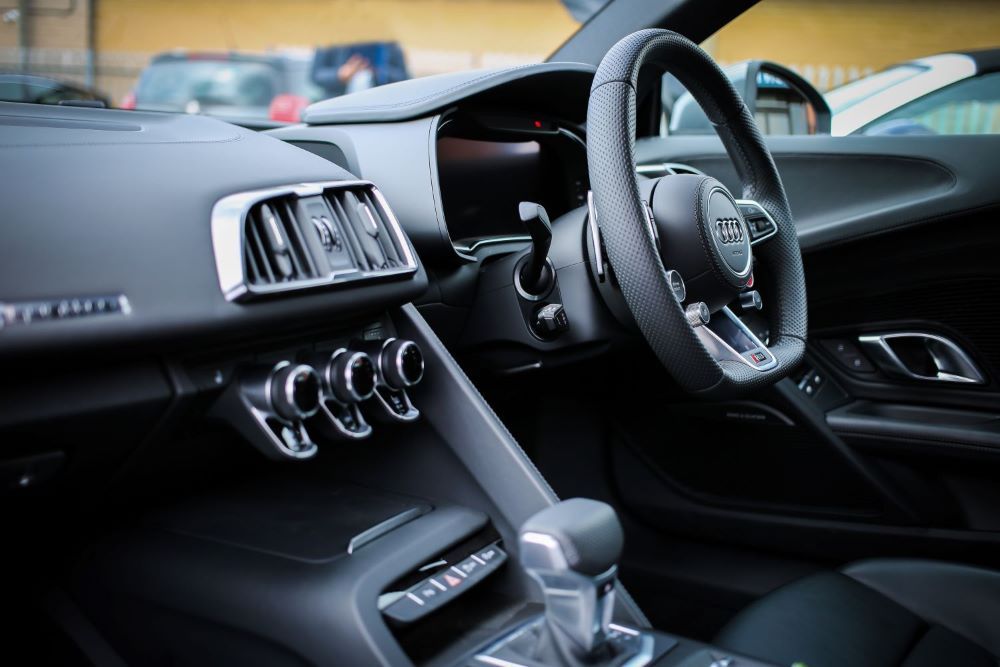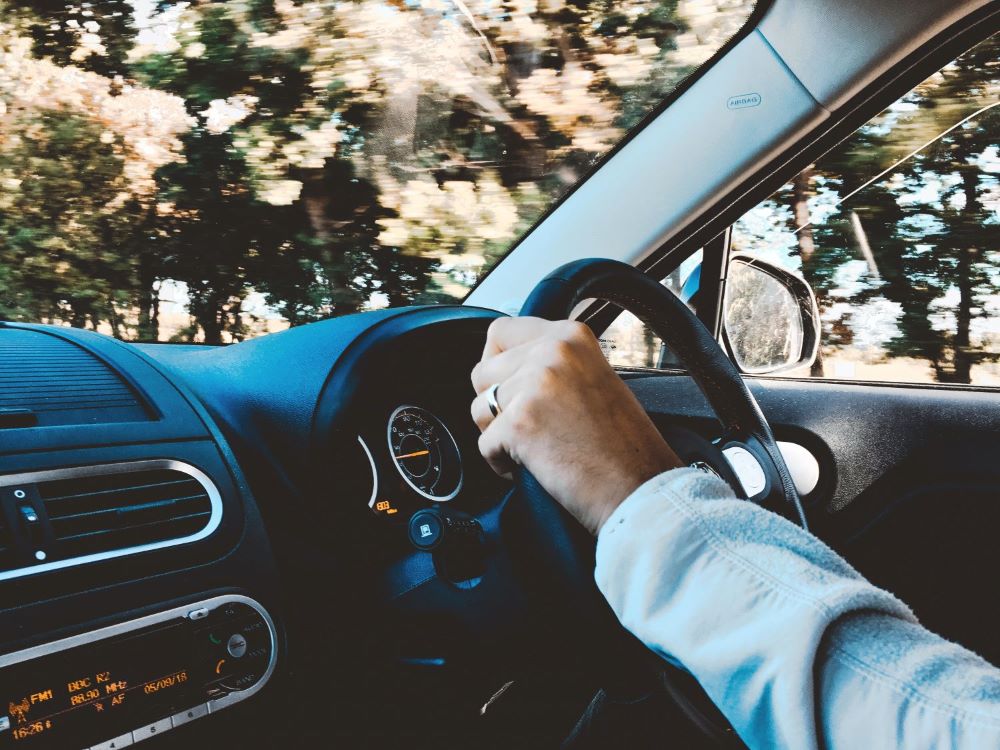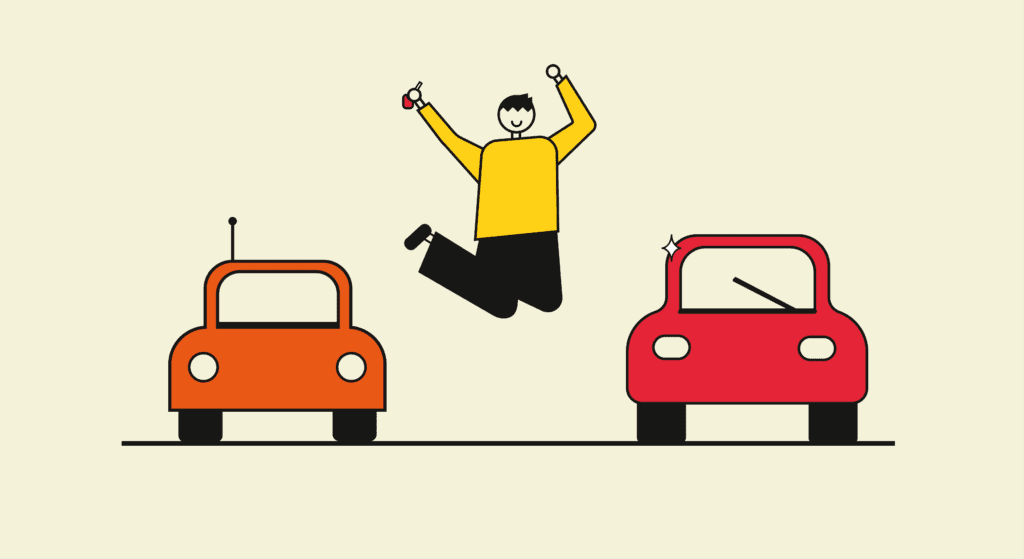Are you thinking of buying a new car or hiring a car to travel? If you’ve recently passed your test, driving a new car can bring with it a number of challenges, especially if you’ve been driving the same vehicle since you started learning how to drive. In this blog, we explain how you can get used to driving a new car quickly. And if you’re test driving a car, be sure to read our guide on how to do so effectively.
1. Get to grips with the car’s layout and controls

Most cars have slightly different layouts, so it’s a good idea to test these before you start driving. This will help ensure that you’re able to control the car in an emergency if necessary. For example, you might find that your windscreen wiper stalk and turn signal are on the opposite sides in some cars.
It’s a good idea to either study the car manual or mess around with the controls yourself while the vehicle is stationary in order to figure out where everything is. This will help you feel more prepared for lots of different circumstances, such as if you need to drive in the rain or low light conditions. You could also swat up on the “show me, tell me” questions to familiarise yourself with the necessary controls.
2. Make sure you’re aware of the car’s proportions
Swapping cars can be jarring, not just because its controls and bite point will differ. You might also find that it takes a while to get used to the size of the car, especially if it’s quite different from the vehicle you previously drove. Getting used to the car’s proportions can take a while. It’s a good idea to get used to this before you drive on busy roads if possible, especially if there’s a big difference between your current car and your old car. Practising manoeuvres such as parallel parking or driving down a narrow space will help you get to grips with the vehicle’s size.
3. Make sure you complete the cockpit drill
Before you start driving, make sure that you complete the cockpit drill. This will help ensure that everything’s in the right position so you don’t strain yourself while driving. You should perform the following checks:
- Make sure all doors, including the boot and bonnet, are closed.
- Adjust your seat so you can fully depress the controls from where you’re sitting.
- Your elbows should be slightly bent while holding the steering wheel.
- Put your seatbelt on, ensuring the belt isn’t twisted.
- Make sure your mirrors are correctly adjusted.
- Ensure the handbrake is engaged and gear stick is in neutral before you start the car.
- Start the engine.
4. Take it slow

For the first couple of journeys, it’s a good idea to take it slow. Consider practising at quiet times and in a quiet area so you can get to grips with the new car without too many distractions. The best time for this is usually between 8:30am and 3pm or after 5pm, though this will depend on where you live. It’s a good idea to drive around an empty car park if possible.
5. Find the biting point on a manual car
Each car’s biting point is different, so you might struggle to find it on your new car at first. Don’t worry if you stall more often in the new car; with practice, you’ll get used to it. You might want to spend a little while with your car in the stationary position finding the car’s biting point.
If you’re struggling with the bite point, you might want to consider going out with a trusted friend or family member and trying to find the car’s bite point in different circumstances. This could include regular starts, hill starts, and starts at traffic lights. It’s a good idea to practise at quiet times at first until you feel comfortable enough to try during busier periods.
Remember: you might find that you stall more often under the pressure of busier periods. This is perfectly normal and will improve with practice!
6. Test the brakes
Before you set off on a long journey, it’s a good idea to test the brakes to make sure they’re in full working order. The brakes might differ in sensitivity too, so make sure to be gentle with them at first to gauge how responsive they are. It’s a good idea to start by depressing the brakes softly when you’re on a straight stretch of road with no one behind you.
7. Consider taking a couple of lessons from a driving instructor
If you’re still not comfortable driving the new vehicle after a few hours’ practice, you might want to consider taking a couple of lessons from a reputable driving instructor. This can help you gain confidence, especially as the driving instructor has dual controls.
8. Practice makes perfect

Just like anything new, make sure to keep practising until you feel confident driving the car. This might take a little bit of time, especially if you’re changing from your driving instructor’s new vehicle to a second-hand banger. However, everything will become second nature in time.
9. Consider using P plates
Still worried that you’ll make mistakes on the road? You can always use P plates, which signal to other road users that you’re a new driver. Most other road users will give you a little extra space when you display P plates.
Read more tips like this in our blog, which covers tips for driving alone for the first time.
Make sure you get the right car insurance
If you’re got a new car, make sure you cover it with the right insurance. At Adrian Flux, we offer car insurance for new drivers and car enthusiasts alike. Call us on 0800 369 8590 for a quote or book a callback at a time that suits you.

